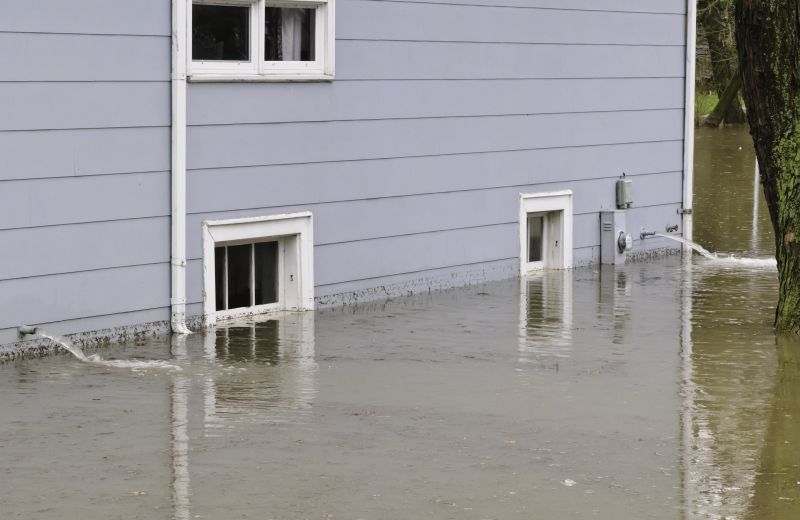Ultimate Collection Of Storm Restoration Equipment And Supplies
Get access to a curated selection of must-have products designed to handle storm-related damage efficiently.
 Storm restoration projects in Palatine, IL, often require a wide array of specialized products to effectively repair and reinforce structures affected by severe weather conditions. From roof repairs to water mitigation, the range of tools and materials available can seem overwhelming. Proper selection of these products is essential for ensuring safety, durability, and long-term resilience of properties. It is important to understand the different categories of storm restoration products, their intended uses, and how they can be integrated into a comprehensive restoration plan.
Storm restoration projects in Palatine, IL, often require a wide array of specialized products to effectively repair and reinforce structures affected by severe weather conditions. From roof repairs to water mitigation, the range of tools and materials available can seem overwhelming. Proper selection of these products is essential for ensuring safety, durability, and long-term resilience of properties. It is important to understand the different categories of storm restoration products, their intended uses, and how they can be integrated into a comprehensive restoration plan.
Top Overall Option
Heavy-Duty Roofing System
A robust roofing system designed for storm resilience typically includes impact-resistant shingles or metal panels, reinforced underlayment, and secure fastening systems. These components work together to provide a durable barrier against high winds, hail, and heavy rain, helping to protect the underlying structure. Proper installation and quality materials are key to maximizing the longevity and effectiveness of the roof during storm events.
Types of Products For Storm Restorations
Impact-Resistant Shingles
Designed to withstand hail and high winds, impact-resistant shingles are a popular choice for storm-prone areas.
Metal Roofing Panels
Known for durability and longevity, metal panels can resist severe weather conditions and provide a secure roof covering.
Water Extraction Pumps
Heavy-duty pumps are essential for removing standing water after flooding to prevent further damage.
Moisture Barriers
These barriers help prevent water intrusion and protect insulation and structural elements.
Storm Shutters
Impact-resistant shutters provide added protection for windows against flying debris during storms.
Impact-Resistant Windows
Windows designed to resist impact help prevent breakage and protect interiors from storm damage.
Roof Bracing Systems
Reinforcement systems that stabilize roofs against high winds and uplift forces.
Sealants and Weatherproof Tapes
Used to seal gaps and prevent leaks in roofing and wall joints.
Insulation Materials
Protects against temperature fluctuations and moisture intrusion post-storm.
Debris Removal Tools
Heavy-duty rakes, shovels, and safety gear facilitate cleanup after storm damage.
Heavy-Duty Ladders
Essential for accessing high areas safely during repairs.
Structural Reinforcement Components
Includes braces, anchors, and fasteners to strengthen vulnerable parts of the building.
Waterproof Paints and Coatings
Applied to exterior surfaces to add an extra layer of water resistance.
Generators
Reliable power sources for temporary operations during power outages caused by storms.
Safety Gear
Helmets, gloves, and protective clothing to ensure safety during restoration work.
Popular Choices
Widely used for their ability to withstand hail and wind damage in storm-affected regions.
Chosen for durability and low maintenance in storm-prone areas.
Commonly employed in flood recovery efforts to rapidly remove excess water.
Popular for providing immediate window protection during severe weather alerts.
Favored for their ability to prevent window breakage and interior damage.
Often installed to enhance the structural integrity of roofs against uplift forces.
Essential for sealing joints and preventing leaks after storm damage.
Selected for protecting interiors from moisture and temperature extremes.
Frequently used for safe access during repairs and inspections.
Commonly added to vulnerable areas to improve resilience.
Popular for maintaining power during outages caused by storms.
Standard equipment for safe handling of storm restoration tasks.
When dealing with storm damage, the primary focus is often on restoring the integrity of the roof, which acts as the first line of defense against weather elements. Roofing materials vary from durable shingles to metal panels, each designed to withstand high winds and heavy rain. Additionally, water mitigation products such as industrial-grade pumps, moisture barriers, and water extraction tools are vital for managing flooding and preventing further structural damage. Reinforcement products like storm shutters, impact-resistant windows, and roof bracing systems can enhance the resilience of a property against future storms.
Effective storm restoration also involves addressing potential vulnerabilities in the building envelope. Sealants and weatherproofing tapes help prevent leaks, while insulation materials can protect against temperature fluctuations and moisture intrusion. For debris removal and cleanup, heavy-duty tools and safety gear are indispensable. Selecting the right combination of these products depends on the specific damage, building type, and local weather patterns.
Investing in quality storm restoration products not only facilitates efficient repairs but also contributes to the long-term safety and stability of structures in storm-prone areas like Palatine, IL. Proper planning and the right tools are crucial for restoring properties to their optimal condition and ensuring they can better withstand future weather events.
Key Buying Considerations
- Assess the specific storm risks in your area, such as wind speeds and hail potential.
- Choose materials that are rated for high impact and wind resistance.
- Ensure compatibility of products with existing structures for seamless integration.
- Prioritize durability and long-term performance over initial cost.
- Verify product certifications and compliance with local building codes.
- Consider ease of installation and whether professional help is needed.
- Evaluate the availability of replacement parts and ongoing support.
- Think about the overall safety features and protective qualities of the products.
- Review customer feedback and product reviews for real-world performance insights.
- Plan for future storm events by selecting products with scalable reinforcement options.
- Factor in maintenance requirements and ease of upkeep.
- Determine the suitability of products for your specific building type and size.
- Consider the aesthetic impact if visible elements like shingles or shutters are involved.
- Check for warranty options and coverage details.
- Assess the environmental conditions, such as humidity and temperature, that may affect product longevity.
